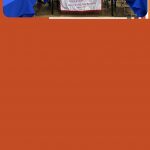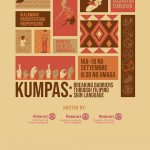The visual-gestural language used by the Deaf community in the Philippines is called Filipino Sign Language (FSL). It is acknowledged as the nation’s official sign language. FSL remains largely unattainable despite its rich historical background and cultural milieu. Only a small portion of the Filipino population is proficient in FSL, except for deaf people and SPED teachers.
The deaf community in the Philippines is still lagging behind the country’s technologically advanced and fast-paced society. The communication between deaf people has improved as a result of the use of Filipino Sign Language (FSL). On the other hand, most Filipinos require assistance in comprehending FSL. The Philippines has a Republic Act 7277 also known as the Magna Carta for Disabled Persons, which mandates the government to ensure the integration of persons with disabilities into mainstream society, including education. The Department of Education (DepEd) already issued several policies and guidelines to support inclusive education, such as the Inclusive Education Policy Framework. Still, FSL is inaccessible in the country.
In commitment to fostering an inclusive and accessible education, the Rotaract Club of PUP San Juan launches Connecting through the Sign: A Basic Sign Language workshop aimed at enhancing the quality education and understanding of Filipino Sign Language (FSL). Attended by rotaractors, and PUP San Juan students. Recognizing the importance of inclusive practices, “Connecting through the Sign” seeks to create an environment where every learner, regardless of their abilities, can thrive.
Connecting Through the Sign: A Basic Sign Language Workshop hosted by Rotaract Club of PUP San Juan and Helping Hands Community. Co-hosted by Rotaract Club of Chinatown Manila, Rotaract Club of Dela Salle University, Rotaract Club of Manila, Rotaract Club of Malabon Highlands, Rotaract Club of Marikina North, Rotaract Club of Metro Aurora Youth Advocates, Rotaract club of Pleasant Hills, Rotaract Club of San Juan, Rotaract Club of Valenzuela Legacy, and Rotaract Club of Valenzuela West. The Guest Speaker is from Deaf and Terp.
The officers of the Rotaract Club of PUP San Juan, believed that communication is the most important aspect of human connection. Communication and language are how humans connect. Because of this, they enable us to express ourselves and, as a result, they can strengthen the bonds we forge with those around us. Language, in its most basic form, is a means of empowerment. In light of this, what are some effective ways that deaf people can communicate with those around them?
Filipino Sign Language (FSL) provides a unique means of communication for the Deaf community in the Philippines. Knowing FSL opens doors to inclusivity, empowerment, and a more diverse and richer tapestry of cultures. It is more than just a language learning challenge. For the Deaf and hearing populations to communicate with each other, they must understand FSL. A deep understanding of sign language enables people to have meaningful conversations and build connections that transcend the boundaries of auditory communication. The foundation of a society that honors the contributions and viewpoints of each individual is this inclusivity.
For individuals within the Deaf community, being fluent in FSL is directly linked to empowerment. It gives them the same access to information as their hearing counterparts, enabling them to fully express themselves and engage in social interactions. When a society accepts and uses FSL, obstacles to success are removed and the Deaf can flourish in all spheres of life—academically, professionally, and socially. Understanding Filipino Sign Language is essential for establishing an inclusive learning environment in the field of education. Educators who possess sign language proficiency can accommodate the various requirements of pupils, guaranteeing that Deaf students obtain high-quality instruction customized to their distinct communication inclinations. This strategy fosters academic achievement and a generation that values inclusivity and diversity.




